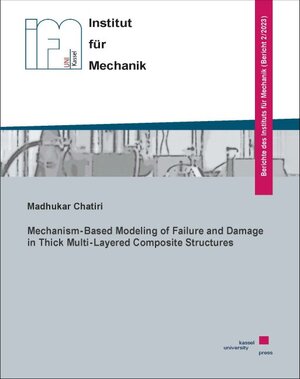Mechanism-Based Modeling of Failure and Damage in Thick Multi-Layered Composite Structures
von Madhukar ChatiriSince the last few years, the usage of unidirectionally fiber-reinforced composite (UD FRC) materials for structural components in the automotive industry is increasing due to definite advantages in comparison to traditional metallic materials. The most important advantage is the weight of this material based on its low density with an accompanying high specific modulus and high a specific strength as well as the adaptability to specific applications. Also, their layer-wise processing into laminates enables the realization of complex geometries with locally strongly differing properties. Also, the dimensioning of fiber-reinforced composite (FRC) laminates in terms of stiffness and strength is being included into efficient, computer-aided engineering processes.
In the current work, composites made of filament winding are focused on. This has become a popular construction technique in a wide variety of industries for creating composite structures including high pressure fuel storage tanks for hydrogen powered automobiles. This research will develop impact and crash simulations of the next generation fuel-cell vehicles with high pressure hydrogen storage vessels made of carbon fiberreinforced plastic (CFRP) material. In the present work, a computer aided engineering (CAE) process chain is developed which consists of the virtual composite vessel generation, three-dimensional explicit finite element analysis of the composite vessel with multi-layered solid elements and the constitutive model. The major focus is on the development and implementation of material equations for the CFRP to capture the intralaminar failure and post-critical behavior.
In the current work, composites made of filament winding are focused on. This has become a popular construction technique in a wide variety of industries for creating composite structures including high pressure fuel storage tanks for hydrogen powered automobiles. This research will develop impact and crash simulations of the next generation fuel-cell vehicles with high pressure hydrogen storage vessels made of carbon fiberreinforced plastic (CFRP) material. In the present work, a computer aided engineering (CAE) process chain is developed which consists of the virtual composite vessel generation, three-dimensional explicit finite element analysis of the composite vessel with multi-layered solid elements and the constitutive model. The major focus is on the development and implementation of material equations for the CFRP to capture the intralaminar failure and post-critical behavior.






